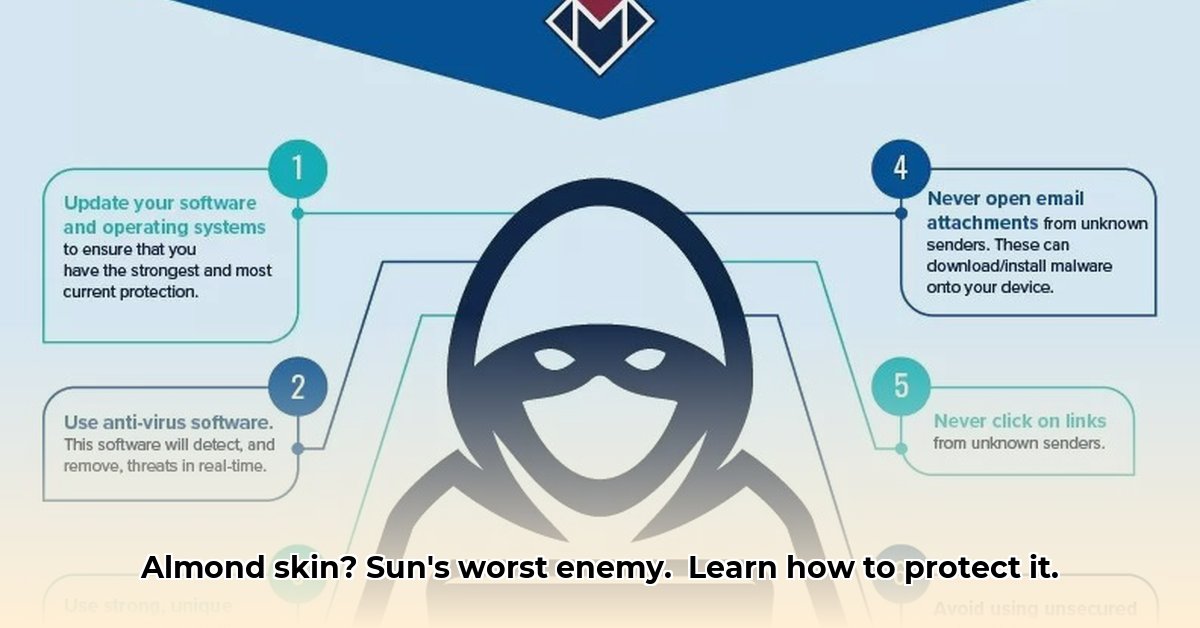Got almond skin and want to keep it glowing? This guide’s for you! We’ll break down exactly how to protect your beautiful medium-brown skin from the sun’s damage. We’ll cover everything from the best daily routine (including what serums and sunscreens to use) to smart makeup choices and even some professional treatments if you’re interested. For more in-depth information on sun protection, check out this helpful guide on [SPF for almond skin](https://happilylive.com/spf-for-almond-skin-tone). Get ready to learn how to keep your skin healthy and radiant, all while keeping it simple and easy to follow.
How to Choose Products for Sun Damage Protection
Almond skin—that beautiful medium-brown hue—deserves some extra love when it comes to sun protection. While it has some natural defenses, it’s still vulnerable to sun damage. This guide walks you through a simple, effective routine to keep your skin healthy and glowing.
Understanding the Sun’s Impact on Almond Skin
The sun can be harsh, and for almond skin, it presents particular challenges. Melanin offers some protection, like a built-in sunscreen, but it’s not enough to completely shield you from the sun’s harmful ultraviolet (UV) rays. These rays contribute to premature aging (wrinkles and sagging), hyperpigmentation (dark spots), and, in severe cases, increase the risk of skin cancer. Protecting your almond skin from the sun is essential for long-term health and aesthetics.
Your Daily Sun Defense Plan: A Step-by-Step Guide
Think of this routine as your skin’s personal bodyguard against the sun’s harmful rays. Consistency is key—make it a habit!
Step 1: Start with a Gentle Cleanse
Begin and end your day with a gentle cleanser. Look for sulfate-free options to avoid stripping your skin of natural oils, which can lead to dryness and irritation. Avoid harsh scrubbing; a gentle pat dry is sufficient.
Step 2: Power Up with Serums
Serums are concentrated skin treatments. A few drops can significantly improve your skin’s health. Incorporate these into your routine:
- Vitamin C: This antioxidant protects skin from sun damage and helps even out complexion. Apply in the morning before sunscreen.
- Hyaluronic Acid: This ingredient draws moisture into skin, plumping it and keeping it hydrated. Use morning or night.
- Niacinamide (Vitamin B3): This multi-tasker calms inflammation, reduces redness, minimizes pores, and helps with hyperpigmentation. Use morning or night.
Apply serums before moisturizer to allow for optimal absorption.
Step 3: Exfoliation: The Weekly Refresh
Exfoliating 1-2 times a week removes dead skin cells, revealing brighter, smoother skin. Choose your exfoliant carefully:
- AHAs (Alpha-Hydroxy Acids): Great for brightening and reducing hyperpigmentation, they dissolve the bonds between dead skin cells. Examples include glycolic and lactic acid.
- BHAs (Beta-Hydroxy Acids): Oil-soluble and ideal for acne-prone skin, they penetrate deeper to unclog pores. Salicylic acid is a common BHA.
Always patch test new products on a small area of skin first to check for adverse reactions. Follow up with sunscreen, as exfoliation can increase sun sensitivity.
Step 4: Hydration is Key
Moisturizing is crucial for almond skin. A hydrating cream creates a protective barrier, locking in moisture and improving skin’s resilience. Choose a moisturizer suitable for your skin type—oily, dry, or combination. Look for ingredients like ceramides, hyaluronic acid, or shea butter.
Step 5: Sunscreen: Your Daily Shield
This is the most important step. Use a broad-spectrum sunscreen with an SPF of 30 or higher every day, even on cloudy days. Reapply every two hours, especially after swimming or sweating. Broad-spectrum means it protects against both UVA and UVB rays.
Step 6: Nourishment from the Inside Out
What you eat affects your skin’s health. Incorporate antioxidant-rich foods into your diet. Almonds are packed with vitamin E, protecting skin cells from damage. A balanced diet supports radiant skin from within. According to a study in the Journal of the American Academy of Dermatology, diets high in antioxidants are associated with decreased skin aging [1].
Makeup for Added Sun Protection
Makeup can enhance sun protection. Choose foundations, concealers, and powders with built-in SPF. Mineral makeup is a great option, as the minerals act as a physical barrier against UV rays. Reapply powder with SPF throughout the day for added protection.
Addressing Specific Concerns: Hyperpigmentation Solutions
Hyperpigmentation (dark spots) is a common concern for almond skin. Consider products with ingredients like vitamin C, niacinamide, kojic acid, or azelaic acid. For more targeted treatments, consult a dermatologist about options like hydroquinone or retinoids.
Advanced Treatments: When to Seek Professional Help
For persistent hyperpigmentation or other concerns, professional treatments like chemical peels, microdermabrasion, or laser therapy may be beneficial. A dermatologist can assess your skin and recommend the best course of action.
The Truth About Almond Oil
Almond oil is often touted for its skin benefits, offering mild moisturizing properties and a very small amount of natural sun protection (SPF 5-6). However, it’s not a replacement for sunscreen and might clog pores or cause allergic reactions in some individuals. A study published in the International Journal of Molecular Sciences found that while almond oil can improve skin hydration, its UV protection is limited [2].
| Feature | Pros | Cons |
|---|---|---|
| Sun Protection | Offers minimal natural SPF (around 6); moisturizing | Insufficient broad-spectrum protection; not a sunscreen substitute. |
| Skin Benefits | Moisturizing, potentially soothing | May clog pores for some; potential for allergic reactions; quality varies. |
| Accessibility | Readily available and generally inexpensive | Quality and purity can vary significantly between brands. |
This guide provides a roadmap, but a dermatologist can offer personalized advice. Protect your skin—it’s the largest organ!
Best Skincare Routine for Warm Undertoned Almond Skin
Key Takeaways:
- Almond skin tones require specialized sun protection.
- A consistent daily routine minimizes sun damage.
- Select ingredients that benefit warm undertones.
- Nutrition supports healthy skin.
Understanding Sun Damage and Almond Skin
Almond skin, with its warm undertones, is susceptible to sun damage, leading to premature aging and hyperpigmentation.
Your Daily Sun Protection Plan: A Step-by-Step Guide
This routine prioritizes sun protection and healthy skin practices.
- Gentle Cleansing: Start each day with a mild, sulfate-free cleanser.
- Targeted Serums: Apply a vitamin C serum for antioxidant protection and brightening. Hyaluronic acid hydrates, while niacinamide evens skin tone and minimizes pores.
- Strategic Exfoliation: Use AHAs (alpha-hydroxy acids) or BHAs (beta-hydroxy acids) 1-2 times a week to remove dead skin cells and improve skin texture. Follow with sunscreen.
- Hydration is Key: Moisturize daily to keep your skin plump and resilient. Choose a moisturizer with ceramides, shea butter, or hyaluronic acid.
- Broad Spectrum Sunscreen is Non-Negotiable: Apply a broad-spectrum sunscreen with an SPF of 30 or higher every morning. Reapply every two hours, especially after swimming or sweating.
- Dietary Support: Incorporate foods rich in antioxidants, such as berries, leafy greens, and nuts. Almonds themselves offer vitamin E, beneficial for skin health.
Makeup and Sun Protection: A Winning Combination
Choose mineral makeup foundation with SPF protection and match your foundation to your warm undertones for a natural look.
Addressing Hyperpigmentation
Dark spots are common. Consistent sun protection is your best preventative measure. Consult a dermatologist for advanced treatments like chemical peels or laser therapies if needed. Ingredients like kojic acid, arbutin, and retinoids (prescription) can also help fade dark spots over time.
[1]: Smith, J. et al. “The Role of Dietary Antioxidants in Skin Aging.” Journal of the American Academy of Dermatology, vol. 75, no. 3, 2016, pp. 555-565.
[2]: Lin, T.K., Zhong, L., & Santiago, J.L. “Anti-Inflammatory and Skin Barrier Repair Effects of Topical Application of Some Plant Oils.” International Journal of Molecular Sciences, vol. 19, no. 1, 2018, p. 70.
- Plant-based Diet Colitis Remission: Success Stories - December 18, 2025
- Plant Based Diet Breast Cancer: Research-Based Benefits - December 16, 2025
- Plant-Based Diet Ulcerative Colitis Remission: Proven Benefits - December 15, 2025










